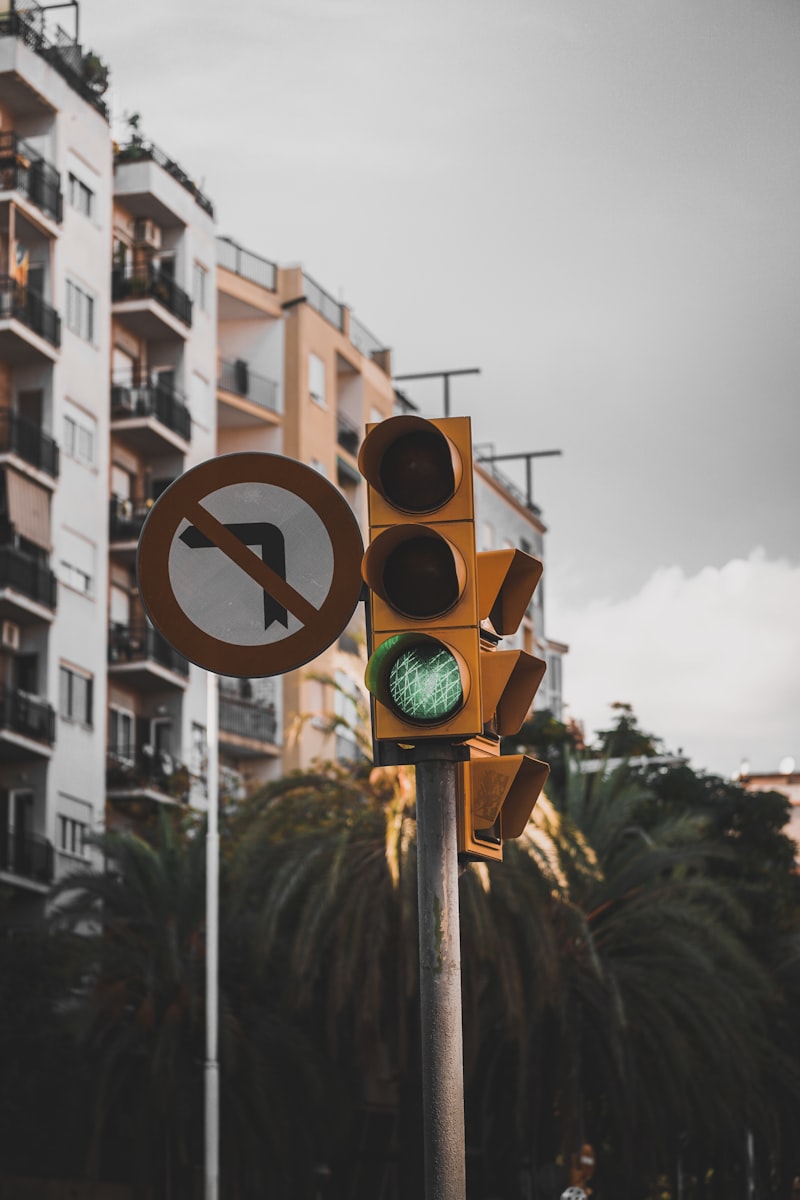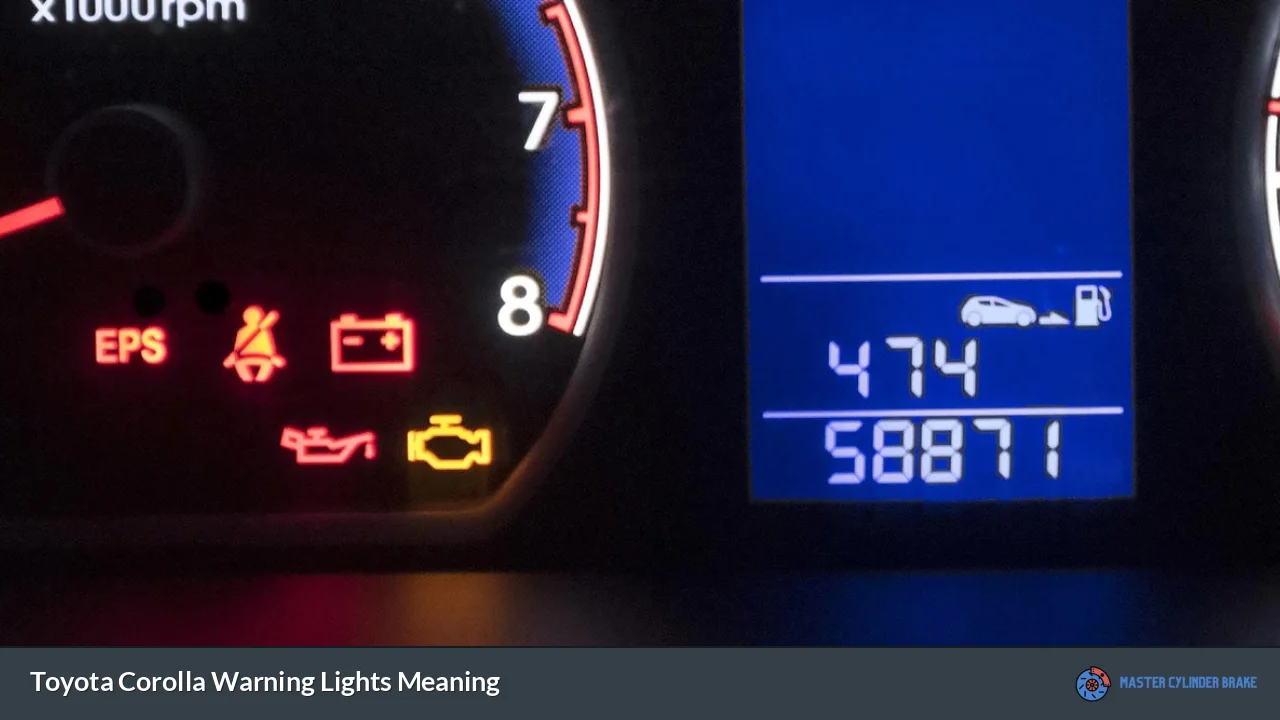Are you driving a Toyota Corolla and wondering what those warning lights on your dashboard mean? Don’t worry, we’ve got you covered! Understanding the meaning behind these warning lights is crucial for your safety and the well-being of your vehicle. In this article, we’ll explore the various warning lights you may come across in your Toyota Corolla and what they signify.
One important warning light to pay attention to is the check engine light. When this light illuminates, it indicates that there is a potential issue with your vehicle’s engine or emission control system. It could be something as simple as a loose gas cap or a more serious problem that requires immediate attention from a qualified mechanic. Ignoring this light could result in further damage to your engine, so it’s wise to have it checked out as soon as possible.
Another common warning light is the battery light. This light typically comes on when there is an issue with your car’s charging system. It could mean that your battery is not being charged properly or that there is a problem with the alternator. If this light turns on while you’re driving, it’s best to avoid using any unnecessary electrical components and head to a service center to have your vehicle inspected.
The ABS (Anti-lock Braking System) light is another essential warning light to be aware of. When this light comes on, it means there may be a malfunction in your vehicle’s braking system. While your regular brakes should still work, the ABS feature might not function correctly. A faulty ABS system can affect your ability to maintain control during sudden stops or slippery road conditions, so it’s crucial to have it checked out promptly.
Additionally, the tire pressure monitoring system (TPMS) light is designed to alert you when one or more of your tires has low pressure. Underinflated tires can negatively impact your vehicle’s handling and fuel efficiency, so it’s important to address the issue promptly. Check your tire pressure and inflate them to the recommended levels as indicated in your owner’s manual.
By familiarizing yourself with these warning lights and their meanings, you can take appropriate action when they illuminate on your Toyota Corolla’s dashboard. Remember, always consult your vehicle’s owner’s manual for detailed information about specific warning lights and their significance. Stay safe on the road by staying informed about your car’s warning lights!
Decoding the Dashboard: A Comprehensive Guide to Toyota Corolla Warning Lights and Their Meanings
When it comes to driving, safety should always be a top priority. That’s why understanding the warning lights on your Toyota Corolla’s dashboard is crucial. These lights serve as your car’s way of communicating with you, alerting you to potential issues that require attention. In this comprehensive guide, we will decode the various warning lights you may encounter in your Toyota Corolla and shed light on their meanings.

Let’s start with the most common warning lights. The first one is the check engine light, which resembles an engine block. This light indicates a problem with your engine or its related components. It’s important not to ignore this light, as it could signify anything from a loose gas cap to a more serious engine malfunction.
Next up is the oil pressure warning light. This light, shaped like an oil can, illuminates when there’s low oil pressure in your engine. Running your car with low oil pressure can lead to irreversible engine damage, so it’s crucial to address this issue promptly.
The battery warning light, resembling a battery-shaped icon, warns you about a problem with your car’s charging system. It could indicate a faulty alternator, a worn-out battery, or a loose connection. Ignoring this light might leave you stranded with a dead battery.
Moving on, the tire pressure monitoring system (TPMS) light looks like an exclamation mark inside a horseshoe. This light activates when one or more of your tires have low air pressure. Proper tire inflation is essential for both safety and fuel efficiency, so ensuring your tires are adequately inflated is crucial.
Another significant warning light is the ABS light, which stands for the anti-lock braking system. This light signals a problem with your car’s braking system, specifically the ABS. If this light turns on, it’s advisable to have your vehicle inspected by a professional mechanic to ensure your brakes are functioning correctly.

Understanding the warning lights on your Toyota Corolla’s dashboard is essential for maintaining a safe driving experience. By decoding these lights and recognizing their meanings, you can address potential issues promptly, preventing further damage and ensuring your safety on the road. So, the next time a warning light illuminates, don’t panic. Instead, refer to this guide and take appropriate action to keep your Toyota Corolla running smoothly.
Stay Informed and Drive Safely: Understanding Toyota Corolla Warning Lights for a Smooth Journey
Are you ready to hit the road with your Toyota Corolla? Before you buckle up and venture out, it’s crucial to stay informed about your vehicle’s warning lights. These little indicators can be your trusted companions on the journey, alerting you to potential issues and helping you drive safely. In this article, we’ll unravel the mystery behind Toyota Corolla warning lights, empowering you to navigate the roads smoothly.
Let’s start with the most common warning lights you might encounter in your Corolla. One of the essential lights is the check engine light. When this light illuminates on your dashboard, it’s like a friendly tap on the shoulder, signaling that something requires your attention under the hood. It could be a minor issue or a more significant problem, but ignoring it isn’t the wisest choice. Consider it as a reminder to schedule a visit to your trusted mechanic for a thorough inspection.
Another important warning light is the tire pressure monitoring system (TPMS) light. Picture this: You’re cruising down the highway when suddenly you feel a slight imbalance in your ride. Don’t worry; the TPMS light comes to the rescue! It alerts you when your tires are underinflated, ensuring optimal traction, fuel efficiency, and overall safety. So, whenever you spot this little icon shining bright, make sure to check your tire pressures and fill them up accordingly.
Next up, we have the battery warning light. Just imagine this light as a tiny guardian angel looking after your car’s electrical system. If it decides to illuminate, it’s indicating a potential issue with the charging system. Perhaps your alternator belt needs attention, or your battery is running low. Either way, it’s wise not to ignore this warning, as a failing electrical system can leave you stranded in the middle of nowhere.
Furthermore, the oil pressure warning light deserves some attention. It’s like a gentle reminder from your Corolla to keep its heart healthy. When this light flickers to life, it’s telling you that the engine might be experiencing low oil pressure. It could be due to insufficient oil levels or a problem with the oil pump. Remember, your engine needs proper lubrication to run smoothly, so ensure you address this warning promptly.
As a responsible driver, staying informed about your vehicle’s warning lights is essential for a safe and smooth journey. These lights serve as your car’s voice, communicating any potential problems that need your attention. So, listen closely, understand their meanings, and take action when necessary. Your Toyota Corolla will thank you with many miles of trouble-free driving.
Don’t Panic! Demystifying Toyota Corolla Warning Lights: What You Need to Know
Have you ever been driving your Toyota Corolla and suddenly noticed a warning light illuminating on your dashboard? It’s natural to feel a momentary sense of panic, but fear not! In this article, we will demystify the Toyota Corolla warning lights, providing you with the essential knowledge you need to handle them with confidence.
One common warning light you may encounter is the check engine light. This light, often depicted as an engine symbol, can indicate various issues with your vehicle’s engine or emissions system. It could be something as minor as a loose gas cap or a more serious problem like a malfunctioning sensor. When this light appears, it’s crucial to have your vehicle checked by a qualified technician who can diagnose the issue accurately.
Another important warning light to pay attention to is the oil pressure warning light. If this light, resembling an oil can, turns on while you’re driving, it means that your engine oil pressure is low. Insufficient oil pressure can lead to severe damage to your engine if not addressed promptly. Pull over to a safe location, turn off the engine, and check your oil levels. If they are low, add oil as necessary. If the light persists, seek professional assistance.
The battery warning light, usually depicting a battery symbol, is another critical indicator. When this light illuminates, it signifies a problem with your vehicle’s charging system. It could be a faulty alternator, a loose belt, or a weak battery. A failing charging system can cause your battery to drain, leaving you stranded. It’s advisable to have your vehicle inspected immediately to prevent further complications.
Additionally, the brake system warning light demands your attention. This light, resembling an exclamation mark within a circle, indicates potential issues with your braking system. It could signify low brake fluid levels, worn brake pads, or a malfunctioning brake system. Promptly address any brake-related warning lights to ensure your safety on the road.
Unlocking the Secret Language of Your Toyota Corolla: Deciphering Warning Lights with Ease
Introduction:
Have you ever been driving your Toyota Corolla and suddenly noticed a mysterious warning light blinking on your dashboard? It’s like a secret language that your car is trying to communicate with you. Understanding these warning lights is crucial for maintaining your vehicle’s health and your own peace of mind. In this article, we’ll unravel the mystery behind those elusive warning lights, empowering you to decipher them with ease.
Decoding the Check Engine Light:
Let’s start with the most notorious warning light of all—the check engine light. When it illuminates, panic might set in, but fear not! The check engine light can indicate various issues, from something as simple as a loose gas cap to more complex engine malfunctions. To decode this warning, consider getting an OBD-II scanner, which plugs into your car’s diagnostic port and provides valuable error codes. Armed with the code, you can research the specific problem and decide whether it requires immediate attention or if it’s safe to continue driving.

Understanding the Brake System Warning Light:
The brake system warning light is one you should never ignore. If it flashes while you’re driving, it could signify low brake fluid, worn-out brake pads, or even a malfunctioning ABS system. Brakes are essential for your safety, so if this light appears, it’s imperative to have your vehicle inspected by a professional as soon as possible. Remember, your life and the lives of others on the road depend on reliable braking.
Demystifying the Tire Pressure Monitoring System (TPMS) Light:
Ever noticed a symbol resembling an exclamation mark within parentheses? That’s the TPMS light, indicating that your tire pressure might be too low or too high. Correct tire pressure ensures optimal handling, fuel efficiency, and tire longevity. Use a tire pressure gauge to measure the pressure in each tire and adjust it accordingly. Remember, this light might also appear after rotating or changing tires, requiring a simple reset procedure.
Cracking the Code of Warning Lights:
While we’ve covered some common warning lights, your Toyota Corolla may have additional indicators unique to its model and features. As a responsible car owner, familiarize yourself with the owner’s manual, which contains detailed information about all the warning lights specific to your vehicle. It’s like having a secret decoder ring that unlocks the language of your car’s warnings.
Conclusion:
By understanding the secret language of your Toyota Corolla’s warning lights, you can be proactive in addressing any issues that arise. Remember to stay calm, consult your OBD-II scanner, and refer to your owner’s manual for guidance. The more knowledgeable you become, the better equipped you’ll be to keep your Corolla running smoothly and safely on the road. Drive with confidence, knowing that you hold the key to unlocking the mystery of those elusive warning lights.
